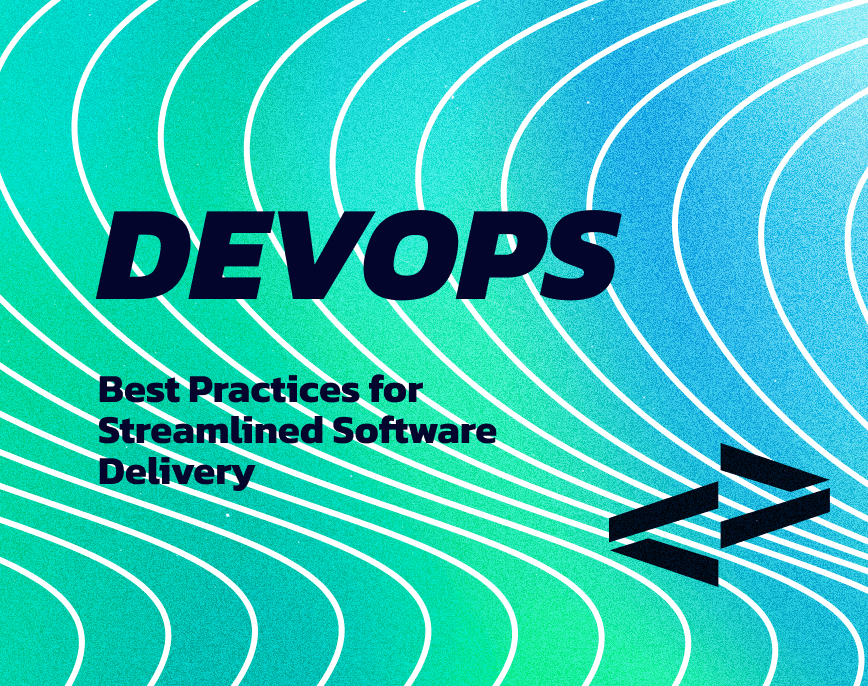
Forget slow deliveries! In the extremely modern world, customers expect lightning-fast software program updates. That’s the place DevOps comes in – a technique that bridges the distance between development and operations, promoting collaboration, automation, and nonstop integration and transport (CI/CD). But how do you navigate this exciting area and ensure your software program zooms from idea to production?
VisibleMagic has been on the cutting edge with all our clients, pushing DevOps techniques that have been tested in practice. Here are a few crucial practices to help your transport move to the next stage:
Automate Everything
Automation is at the heart of DevOps, serving as the basic foundation for experienced and secure software delivery pipelines. By automating tasks that include code deployment, testing, configuration administration, and infrastructure delivery, you can not only save teams precious time but also reduce the danger of human error. In addition, automation promotes consistency across your environments, ensuring that the delivery is smooth and stable, no matter the type of IT infrastructure used.
Сontinuous Integration and Continuous Deployment (CI/CD)
Implement Continuous Integration and Continuous Deployment (CI/CD): CI/CD practices are critical for modern software program improvement, enabling your teams to deliver excellent code at a fast speed while keeping it balanced and secure. Continuous integration enables early detection of bugs by mechanically pushing proper code adjustments into a shared repository and running automated tests. Meanwhile, continuous deployment automates the release method, permitting teams to set up new skills and updates quickly and regularly. By embracing CI/CD pipelines powered by robust tools like Jenkins, GitLab CI, or CircleCI, agencies can optimize their improvement workflows and deliver costs to clients with self-warranty.
Infrastructure as Code (IaC)
Embrace Infrastructure as Code (IaC): Traditional strategies for managing infrastructure manually are associated with challenging situations such as lack of consistency, loss of scalability, and increased risk of failure. Infrastructure as Code (IaC) revolutionizes the way infrastructure is built and controlled by treating infrastructure components as code. With IaC devices like Terraform, AWS CloudFormation, or Azure Resource Manager, teams can redefine their infrastructure by using declarative code, enabling model administration, repeatability, and scalability. This method does not only beautifully optimize the delivery technique, but also allows collaboration between development and operations teams, leading to more secure and agile infrastructure manipulation practices.
Сross-functional Collaboration
Collaboration is at the heart of the DevOps philosophy, breaking down organizational walls and selling shared commitment at some point in companies. By fostering open communication and collaboration between development, operations, first-class safety, protection, and special interest groups, businesses can take advantage of numerous perspectives and knowledge to boost innovation and fix complex issues more efficiently. Collaboration equipment, including Slack, Microsoft Teams, Jira, or Confluence, plays a key characteristic in facilitating word exchange and know-how sharing, so teams can coordinate their actions and align their goals in the direction of turning costs for customers.
Monitoring and Iteration
Continuous monitoring and iteration: Continuous monitoring and iteration are essential additions to the DevOps lifecycle, making sure that software program systems stay stable, powerful, and strong in the face of needs and challenging situations. By collecting and reading metrics connected to device average performance, uptime, security, and personal enjoyment, teams can gain valuable insights into the health of their applications and infrastructure.
By using tracking tools along with Prometheus, Grafana, Datadog, or New Relic, organizations can spot anomalies, discover bottlenecks, and address issues before they affect end users. In addition, non-stop new releases allow groups to include feedback from tracking and analytics in their development cycles, driving continuous improvement and optimization at any point in the entire software delivery pipeline.
Conclusion
DevOps offers a transformative technique for software program application delivery, allowing groups to deliver to customers quicker, with higher quality and confidence. By enforcing these l methods, you’ll be well on your way to achieving a streamlined software program application delivery method.
Remember, DevOps is an ongoing adventure, not a vacation spot. Keep adjusting your technique, including new tools, and most importantly, be interested in fostering a collaborative lifestyle that values speed, fantastic, and innovation.
In our company, we’re dedicated to helping companies achieve DevOps excellence. If you’re trying to optimize your delivery pipeline and take advantage of the full potential of your software program improvement, get in touch with us these days.
